Technology
For Turbo Stars, expanding in Brazil is a strategic move in a transforming market
GMB – You started out in Marketing and then entered the world of sports. How has this experience shaped your leadership style today at Turbo Stars? Alex Kosachenko- After having worked in a marketing agency for half a year I’ve realized that my perception of marketing that I wanted to be in, and the one […]

GMB – You started out in Marketing and then entered the world of sports. How has this experience shaped your leadership style today at Turbo Stars?
Alex Kosachenko- After having worked in a marketing agency for half a year I’ve realized that my perception of marketing that I wanted to be in, and the one I actually was in – were completely different. I was not feeling as I was developing myself and the feeling of stagnation has made me look for other offers.
Somehow having ended up in my first IT company that was mostly aimed at educational products, I tried combining project management and product management positions. After a few years, having the feeling that the maximum in my previous place was reached, I was invited to a company that was developing a sports betting solution for one of the most known brands at that time.
Then the Turbo team reached out, asking if I was curious to take on something I hadn’t tried before — something a bit broader, because it wasn’t only about sports, but also casino. And that’s the job I really enjoy now. My journey taught me that you should always work where you truly feel you belong.
Tell us about Turbo Stars. What do you offer?
Turbo Stars is a leading B2B next-gene sports and casino platform provider, delivering high-quality solutions for iGaming operators launches. With over six years of market experience, the company empowers operators with innovative, reliable products designed to elevate the gaming experience.
Turbo Stars has built a strong reputation through multiple long-lasting partnerships, showcasing proven product quality across its comprehensive casino and sports offerings. Tailored for modern operators, Turbo Stars’ solutions drive engagement, performance, and sustained growth.
In your opinion, what are the main qualities a CEO needs to have to successfully lead the iGaming and sports betting sector?
To lead successfully in the fast-paced iGaming and sports betting industry, a CEO needs deep industry expertise, inspiring leadership, and sharp decision-making. Mastery of regulatory landscapes, emerging tech like blockchain and AI, and player behavior is essential to anticipate trends and outmaneuver competitors.
Trust is the foundation of leadership. A CEO must foster a bold, innovative culture where teams feel empowered to take smart risks. Leading by example—hustling alongside the team—builds loyalty and drives execution.
Clarity and communication are vital in this dynamic sector. A great CEO cuts through complexity, aligning everyone with transparent goals and the “why” behind decisions. This turns chaos into progress.
Finally, a CEO needs charm—not just to charm stakeholders, but to inspire. The iGaming and sports betting sector thrives on excitement, and a CEO should embody that energy, rallying teams and partners around a shared passion for delivering thrilling, responsible experiences to players.
How would you describe Turbo Stars’ differential in a market as competitive as sports betting and online casino?
Our team consists of senior-level professionals with a strong track record, which allows us to deliver high-quality solutions both quickly and efficiently.
What truly sets us apart is the unique blend of deep industry expertise, innovative technologies, and a relentless focus on building the best product in the market. By integrating AI into our platform, we’re able to optimize and speed up key processes, while our modern tech stack gives us the flexibility and scalability needed to grow and adapt in a fast-changing environment.
What motivated Turbo Stars to enter the Brazilian market and how do you see the potential for growth here?
The legalization of the Brazilian market opens up opportunities for operators to invest without fear of financial losses. This is a direct path to expanding and bringing up to the light an already large segment.
For Turbo Stars, expanding into Brazil is a strategic move. It represents both a significant growth opportunity and a responsibility. We’re not just looking to launch operations—we aim to contribute to the foundation of a transparent, regulated, and responsible gaming environment. As one of the fastest-growing gambling regions in the world, Brazil has the potential to set new standards, and we’re proud to be part of that journey from the ground up.
You are very passionate about eSports. How do you see the relationship between traditional sports and eSports?
Since the early 2000s, esports has evolved far beyond being seen as just a “kids’ game.” It’s grown into a mature, global ecosystem—with professional teams, major tournaments, significant investments, and a rapidly expanding fan base. While the growth trajectory has been gradual, esports is steadily gaining the status of traditional sports in terms of viewership, engagement, and commercial value.
From a business perspective, it’s clear: no forward-thinking bookmaker today can afford to ignore esports. It has become a must-have vertical in any competitive sportsbook offering, and we see it as a key driver of engagement among younger, digital-native audiences.
What are the biggest challenges for an international company to establish itself strongly in Brazil, especially considering the evolving local regulations?
The biggest challenge today is the growing competitiveness of the market. We see more global brands (both B2B and B2C) entering the space with certifications and licenses. The competitive landscape is becoming increasingly intense.
For new operators, entering the market and achieving success won’t be easy. Not only will they need to offer a strong and relevant product, but they’ll also have to invest in personalization and marketing to stand out from the crowd.
Ultimately, every operator will need to answer the key question players are asking: “Why should I choose you?” Those who can deliver a clear, compelling answer—and back it up with real value—will be the ones who succeed.
You have talked a lot about the synergy between sports betting and casino. How is Turbo Stars innovating in vertical integration?
Synergy is key because successfully operating a casino without sports is almost impossible, except for a few cases. The same goes for running a sports bookmaker without a casino.
These are two products that always go hand in hand. However, everyone in the market knows there is a difference between the players of these products — cross-selling casino to sports is very difficult due to the more complex cognitive mechanics of sports betting, while the simplicity of casino games attracts players.
Turbo Stars’ task is to create a unified product where sports and casino work as one whole. We use in-game mechanics to teach casino players about sports and to inspire them to independently switch to sports betting. This includes introducing micro-betting, slot mechanics, and simplified bet placement processes.
Betting is just like any other game, such as slots. By simplifying its mechanics, we’re not just accelerating adoption—we’re shaping the future of how players engage with gambling industry.
Do you believe that the future of iGaming lies in a more immersive and personalized experience for the player? How are you moving in this direction?
Absolutely! Like any competitive market—whether automotive, hotel business, or others—the more personalized the offering, the stronger the player’s connection to the product becomes. This leads to faster loyalty and long-term engagement. Without personalization, it’s increasingly difficult to create a compelling product that builds genuine trust between the brand and the player.
Personalization may seem like a small detail, but it significantly enhances the player experience by making them feel seen and understood. This sense of recognition is essential for fostering trust and lasting relationships in the iGaming space.
You said that eSports are a natural trend. What strategies is Turbo Stars adopting to position itself strongly in this segment?
To deliver a top-tier esports product, Turbo Stars strategically partners with leading providers like DATA.BET and BETER. These companies bring extensive experience in esports trading and offer a comprehensive range of events and markets. Their data is fully licensed from tournament operators, ensuring the most accurate and up-to-date odds.
This level of reliability is crucial—it gives our operators full confidence in the product, which in turn encourages them to invest further in esports offerings. By combining trusted data partners with our commitment to innovation, we are positioning Turbo Stars as a strong player in the rapidly growing esports segment.
In your view, how can eSports become a bridge between younger audiences and traditional betting platforms?
The younger generation that grew up with games like Counter-Strike 1.6 has naturally transitioned to betting on titles like Counter-Strike 2. Similarly, those who spent time playing classic games such as Minesweeper now engage with modern crash games like Mines. This evolution highlights a clear and organic link between gaming interests and the emergence of potential gambling customers.
Esports acts as a powerful bridge by connecting younger audiences with traditional betting platforms through familiar gaming experiences, making the transition seamless and engaging. Understanding and leveraging this connection is key to capturing and retaining the next generation of players.
When do you plan on coming to Brazil?
Hopefully, I’ll make it to the conference next year! We’re building a product that will take over the market no doubt! And that’s what we’re bringing.
Source: Exclusive GMB
Technology
Training Kit Release Campaigns : Chelsea FC
BingX, a prominent cryptocurrency exchange and Web3 AI firm, has unveiled Chelsea FC’s 2025/26 training kit as part of its ongoing partnership with the Premier League club. This latest release reinforces the brand’s position as the Official Men’s Training Kit Partner. The training kit boasts a sleek design that calls attention to the Chelse FC’s […]
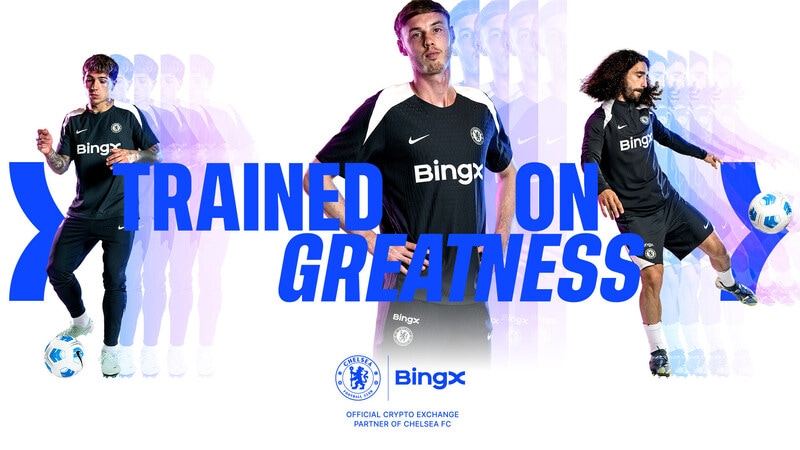
The BingX x Chelsea FC campaign is titled ‘Trained on Greatness.’ The initiative draws parallels between the disciplined preparation of elite athletes and the data-driven precision of AI-powered trading. To achieve this, the campaign emphasizes the core values of focus, adaptability, and performance optimization. A dynamic launch video and refreshed visual identity underscore this synergy, positioning both entities as leaders in their respective fields — sports and fintech.
Image Credit: BingX x Chelsea FC
Technology
Warner Bros. Discovery to split into two companies
By MICHELLE CHAPMAN, AP Business Writer NEW YORK (AP) — Warner Bros. Discovery will calve off cable operations from its streaming service, creating two independent companies as the number of people “cutting the cord” brings with it a sustained upheaval in the entertainment industry. HBO, and HBO Max, as well as Warner Bros. Television, Warner […]
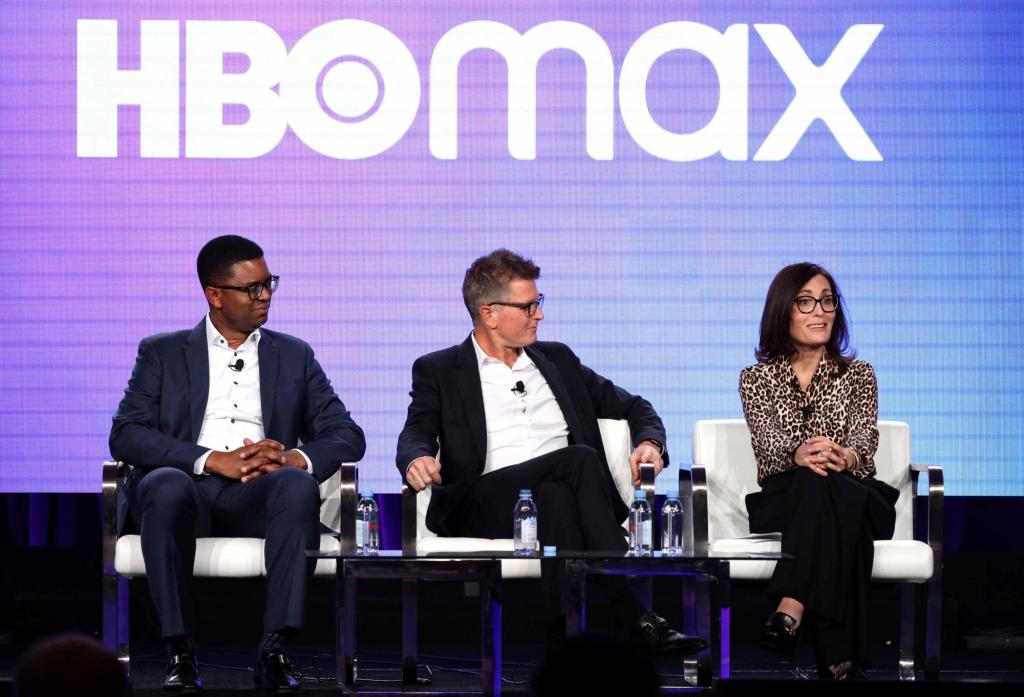
By MICHELLE CHAPMAN, AP Business Writer
NEW YORK (AP) — Warner Bros. Discovery will calve off cable operations from its streaming service, creating two independent companies as the number of people “cutting the cord” brings with it a sustained upheaval in the entertainment industry.
HBO, and HBO Max, as well as Warner Bros. Television, Warner Bros. Motion Picture Group, DC Studios, will become part of the streaming and studios company, Warner Bros. said Monday.
The cable company will include CNN, TNT Sports in the U.S., and Discovery, top free-to-air channels across Europe, and digital products such as the Discovery+ streaming service and Bleacher Report.
Shares jumped 11% at the opening bell.
Warner Bros. Discovery CEO David Zaslav will become serve as CEO of the company that for right now is called Streaming & Studios. Gunnar Wiedenfels, chief financial officer of Warner Bros. Discovery, will be CEO of the cable-focused entity, for now known as Global Networks.
“By operating as two distinct and optimized companies in the future, we are empowering these iconic brands with the sharper focus and strategic flexibility they need to compete most effectively in today’s evolving media landscape,” Zaslav said in a statement.
Just days ago Warner Bros. Discovery shareholders in a vote that was symbolic as it’s nonbinding, rejected the 2024 pay packages of some executives, including Zaslav, who will make more than $51 million.
Warner Bros. Discovery said in December that it was implementing a restructuring plan in which Warner Bros. Discovery would become the parent company for two operating divisions, Global Linear Networks and Streaming & Studios. That was seen as a preview of the separation announced Monday.
Technology
Your Fitness Tracker Could Help Doctors Spot Health Risks Early
From hydration to ovulation, health trackers keep tabs on nearly 1 in 4 Americans. But wearable devices like these are just one piece of the ever-expanding medical “internet of things” — a universe of internet-enabled devices, applications, wearables, and more that collect, share, and analyze our data. UC San Francisco Associate Professor of Medicine Sandeep […]

From hydration to ovulation, health trackers keep tabs on nearly 1 in 4 Americans. But wearable devices like these are just one piece of the ever-expanding medical “internet of things” — a universe of internet-enabled devices, applications, wearables, and more that collect, share, and analyze our data.
UC San Francisco Associate Professor of Medicine Sandeep Kishore, MD, PhD, MSc, is part of a joint UCSF and UC Berkeley team preparing to pilot wearable devices to help treat some people with diabetes and high blood pressure at UCSF. We asked him about wearable health technology and what the future holds for these ubiquitous gadgets.
How is wearable technology already intersecting with our lives?
Many people are likely to think about fitness trackers that count your steps, monitor your heart rate, and even take your blood oxygen level. But there are also smartphones. You can think about a pharmacy or a message from your health care team on MyChart. That’s all a form of mobile health.
One of my favorite examples is sensors, think about blood pressure cuffs or continuous glucose monitors that connect to your phone and provide the data instantly. If you’re unfamiliar with glucose monitors, these are little patches with a very tiny needle that usually go on the upper arm and can sample your blood sugar levels about every five minutes.
We are working here at UCSF to find new ways that the information can be relayed to your health care team and be made actionable.
How could wearable technology fill a health care data gap?
As physicians, we often only get a snapshot of what’s happening for a patient, like when we take your blood pressure at a clinic visit. It’s surprisingly difficult to get accurate blood pressure readings in a clinic.
Patients may have just had their morning coffee and taken the stairs, or they might be a little anxious — all of these can temporarily increase your blood pressure reading at the doctor’s office. It’s what we call, “white coat hypertension.”
Wearables, like electronic blood pressure cuffs, could record your blood pressure 365 days a year, sending the data to a secure system that could give your physician a real window into your blood pressure over time, not just at six-month check-ups.
Where do you see the future of wearable health technology in five years?
- Wearable tech has to get easier for patients: Finding ways to, for instance, use a smartphone one day to take your blood pressure through your camera phone or, in the future, check your heart rate via a Zoom video recording, capture my attention because they don’t take much effort.
- Digital twins: We might one day be able to build a “digital twin” of patients — a computer model of their health that gives their care team an additional tool. It’s still early, and I haven’t yet seen it clinically validated, but I’m intrigued by that in the next five years,
- It’ll be the bouquet, not the flowers: It’s an idea I learned from UCSF Professor of Medicine Ida Sim, PhD, MD. You can imagine a number of gadgets focused on just one condition. This is going to lead to data overload, and, as a physician, more data than I’m going to know what to do with. Pulling these data streams — the flowers — together into a bouquet, to make it useful, simple, and scalable is going to be the secret sauce.
What are the challenges to all this data?
The sheer volume is huge. Each patient can generate gigabytes of data per month, which is a data processing challenge.
The other issue is with aggregation and standards. Different devices track data differently. Companies have proprietary algorithms behind the data, which they sometimes lock, so harmonizing and combining data to make sense of it will be a challenge.
Could artificial intelligence deal with this deluge of data?
Yes. Artificial intelligence has the potential to sift through the firehose of data to detect new patterns in diseases. Those patterns could help us understand what’s behind symptoms or even what’s driving disease. It may also help us predict the risk of certain conditions. The goal would be to turn all that data into clinically actionable alerts and interventions. At UCSF, we’re working to find ways data from wearable technologies can be relayed to your health care team to help them support you and, together, make better decisions about your health.
What would this look like in real life?
I think about a patient I had on the wards recently. She was in her 30s and had type 1 diabetes, meaning that she requires frequent insulin to manage her blood sugar. Unfortunately, she ran out of insulin and presented to the hospital nearly comatose.
In many ways, she was hidden. Her roommate was the one who found her slouched in her room. If my patient had some sort of passive blood sugar monitoring, we could envision a day when that data could be part of a feedback loop between her and her health care team. Imagine if it sent an alert to a physician or a pharmacist monitoring a dashboard? Or maybe initiated a call or text to her phone that — if she didn’t respond — would trigger an emergency response? Maybe, we could have prevented this from happening.
Will AI replace doctors?
No. Clinical insight is still very essential. It’s not the case, in my mind, that a data scientist or an AI expert alone can take a bunch of data and generate a clinical insight without any clinical experience. To build tools, you’re going to need cross-functional teams with developers, clinicians, patients, UX, designers, etc.
How is UCSF charting the future of big data as it relates to health care?
UCSF and UC Berkeley are working together to bring wearables into the clinic. We’ve partnered to build an open-source platform called JupyterHealth to bring health data and AI together for diabetes and high blood pressure, some of the most common conditions. The platform uses AI models to surface key insights for clinicians and patients in near real time to help manage these conditions better. Our goal is to leverage this unprecedented level of data to help clinicians and patients make decisions now that otherwise might have taken months to years with typical monitoring.
How does UCSF ensure that the AI solutions it designs and studies are safe, secure, and ethical?
UCSF has a rigorous system of checks and balances that starts long before any study does. As a physician-scientist researching AI, I have first-hand experience with this process. We have a new Health AI Oversight Committee of experts that reviews the projects to ensure the AI we produce and study is trustworthy, and that it’s secure, fair, and protects people’s privacy.
Researcher must submit detailed research plans to our institutional review board. This expert committee must sign off on any research that might impact or involve human participants to ensure that research is conducted safely and ethically.
Technology
Fixing JD Sports has taken longer than I thought
We’ve barely exchanged “hellos” when Régis Schultz, the boss of JD Sports, glances at my feet. “Nice sneakers,” he says, gesturing to my silver Adidas Gazelles. Gazelles, along with the Samba style, have been among the biggest trainer trends of the past few years, although their ubiquity now makes me feel slightly off-trend. Still, approval […]
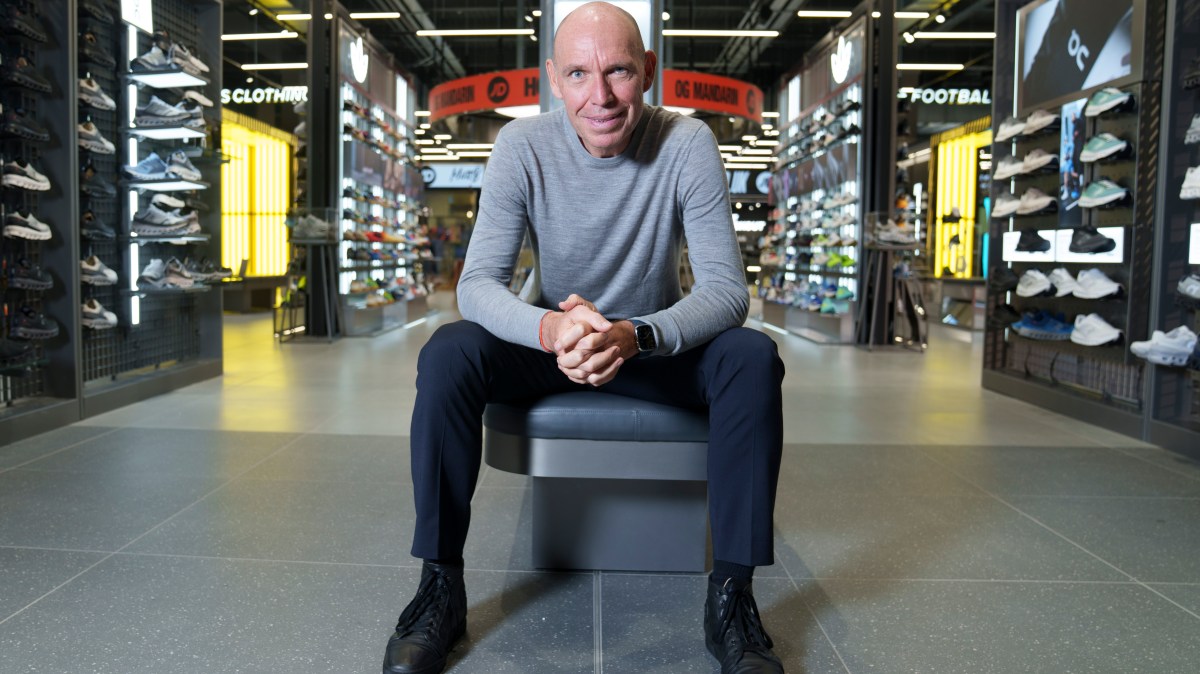
We’ve barely exchanged “hellos” when Régis Schultz, the boss of JD Sports, glances at my feet.
“Nice sneakers,” he says, gesturing to my silver Adidas Gazelles. Gazelles, along with the Samba style, have been among the biggest trainer trends of the past few years, although their ubiquity now makes me feel slightly off-trend. Still, approval from the UK’s biggest trainer retailer and a self-confessed sneakerhead is not to be sniffed at.
“My wife is always complaining that I have too many sneakers,” he says as we walk through the group’s new shop, its biggest so far, at the Trafford Centre in Manchester. “Whenever I get a new pair, she asks me where they’re going to go.”
Today he is wearing unbranded black trainers. Sporting a specific brand on days like this can ruffle feathers. According to Schultz, some have been known to ask: “Why weren’t you wearing our brand?”
Schultz, 56, will mark three years as chief executive of the FTSE 100 sportswear giant this September. He inherited a company in rude health thanks in large part to Peter Cowgill, 72, who transformed JD into a global sportswear powerhouse. During his 18-year reign, the retailer expanded internationally, acquired rivals and delivered an 8,023 per cent shareholder return before his dramatic departure in 2022 amid a string of corporate governance failings.
It should have been a relatively easy gig for Schultz but instead his tenure has been overshadowed by a torrent of external challenges. The post-pandemic athleisure boom cooled. Nike, JD’s biggest partner, faced a slowdown as rivals such as Adidas and On Running gained ground. Inflation and cost of living pressures dampened demand and US tariffs have added fresh strain. Britain, JD’s home market, has been “volatile”.
JD Sports Fashion’s share price is down about 35 per cent in the past year, compared with a 7 per cent rise in the FTSE 100.
“It is painful,” Schultz admits as we sit down in one of the boardrooms at the back of the shop. “You don’t feel good when the share price is going down. It was 100p when I started, now it is 80p.”
Adding to the pressure, Cowgill, who retains a stake in the company, “is not happy about the share price. He gives me grief about it,” Schultz says, half joking. Cowgill also gave him “grief” for the sale of some smaller fashion brands he had once bought. “But he feels we are doing the right thing,” Schultz insists, adding that the pair talk often and “he is always supportive”.
JD’s largest shareholder, Pentland Group, which owns 52 per cent, has taken a longer-term approach. “Mr Pentland has been saying, ‘Forget about your share price, you need to do the right thing for the long term: share price is not a way to look at your performance,’ ” Schultz says.
Even so, he has had moments of doubt. “You ask yourself, ‘Is there something I have done wrong?’ When I joined [the French electrical retailer] Darty the share price was 30p; when I left it was 170p. I always create a lot of value for shareholders.”
The JD Sports branch at the Trafford Centre in Manchester, the company’s biggest shop
The Frenchman, sometimes known for being brusque towards the media, is much warmer and more forthright than usual, despite having just flown in from Zurich and cycled the ten or so miles into the city centre from Manchester airport. He does not drive or own a car. “I cycle everywhere,” he says, even in London.
His biggest regret? Not managing market expectations more proactively. “I would have guided the market a little bit more to understand the costs that we were putting in place,” he says. He wishes he had told the City earlier that profit growth was going to be flat for a few years while he overhauled the company’s infrastructure.
“I joined a company that was an £8 billion turnover company but with the infrastructure of a £100 million company and fixing that has taken a little bit longer and been more costly than I was forecasting,” he says. “That means our profit has been flat.”
Under Schultz, JD has invested heavily: overhauling HR systems, improving pay structures for younger shop workers, building a new warehouse in the Netherlands, improving corporate governance and acquiring companies such as the US sportswear chain Hibbett and French retailer Courir.
JD recently came close to hitting £1 billion in annual profit, making it one of the few UK retailers to do so, but missed the mark because of these investments and economic pressures. Pre-tax profits fell 11.8 per cent to £715 million in the year to February, from £811 million the year before. The company delivered profit before tax and adjusting items of £923 million, in line with guidance.
Turnover, meanwhile, has grown about 10 per cent on a compound basis since 2022. It rose 8.7 per cent to reach £11.5 billion over the past year, mainly driven by new shop openings. The company anticipates that like-for-like revenues will be down this year compared with the last financial year.
Could Schultz have taken a different route for investors? “We could have done a share buyback right away and increased earnings per share,” he says. “But I think it was more important to invest in our infrastructure. To invest in our people. At one point in time things will be recognised. It is just a question of time.”
Cowgill was praised for how he ran the business but Schultz believed that parts of it needed pruning. He inherited a long tail of smaller fashion brands, many personally acquired by Cowgill, which he swiftly divested. By December of his first year JD had sold 15 non-core brands to Frasers Group for £47.5 million.
“Peter bought those businesses, he was a business friend,” Schultz says. “He could do it because he built it but I told them, ‘I cannot spend the time to understand your business. I will do a bad job. I’m not going to spend the time to understand your business while trying to grow a global company.’ ”
Getting rid of some of the smaller brands early in his tenure allowed Schultz to focus on the company’s core growth engine: North America, now its largest market.
US tariffs have created uncertainty in the market, Schultz says, “which makes it difficult to plan, but we have planned for the worst”.
JD has diversified its sourcing since the pandemic. “Before Covid everything was produced at one time in China,” Schultz says. “During Covid we discovered that that was not very smart. We now use Egypt, Turkey, North Africa, Morocco … so we are much more agile than we used to be.” The company now sources much more from Egypt, he notes, as it has zero tariffs.
In the US, Nike is leading the response to tariffs by raising prices modestly. Nike plans to “spread the increased costs”, Schultz says. “A third to the consumer, a third to the manufacturer and a third to the rest of the supply chain. Us included. And everyone will follow Nike.”
JD is largely done with merger and acquisition activity in North America. “I hate to say we’re done,” Schultz says. “But I think [we are], except for some of the more regional players that we could consolidate.”
The company is now focused on opening shops and fully embedding Courir and Hibbett. It plans to open about 150 new shops globally, with a focus on countries such as Italy and France, and convert 100 existing shops this year. There will be about 50 closures, mainly in eastern Europe. It is looking at growing its franchise model in Africa, the Middle East, southeast Asia and South America.
Despite the headwinds, JD — founded in Bury in 1981 — remains one of the UK’s best-run and most consistently successful retailers, a status few in the City would dispute. While many high street names have stumbled or faded, JD has built a reputation as a sharp operator with global reach, deep brand partnerships and a flair for staying in sync with youth culture.
As for how the JD machine operates, Schultz likens it to Inditex, the Spanish group behind Zara. “Trends come straight from shop floors,” he says. Branch managers report what is selling to the head office and the insights travel rapidly across the group’s 5,000 or so locations.
A recent example: the Adidas Samba. Schultz says the US team was initially sceptical that the retro style, beloved in the UK, would translate. “They told me it wouldn’t take off there,” he recalls. “But now, all the women are wearing them.”
The biggest shift since Schultz joined, he says, is the sportswear landscape itself. “Nike was very hot when I joined and the board was insistent on building on that relationship because it’s so critical. Nike was the big leader, now you have more small brands [like On and Hoka] leading the way. It shows how this industry is in a growth mode.”
What are his thoughts on Elliott Hill, the new Nike boss brought in to turn the brand around? “He’s doing all the right things, which is really refreshing to see.”
And is Schultz here for the long haul? “It’s for the board to decide but yes, for sure. I’m enjoying my job … Does it look like I’m not enjoying my job?” he quips.
JD’s new shop in the Trafford Centre
Chain chases star power to open new megastore
How do you celebrate the launch of a 100-metre-wide sports megastore? By getting the world’s fastest man to run across it, naturally.
This weekend JD Sports opened the doors to its largest store to date: a 41,000 sq ft shop in the Trafford Centre, Manchester, complete with the brand’s widest storefront. To mark the moment, Usain Bolt, who holds the 100-metre world record of 9.58 seconds, sprinted the width of the new site, cheered on by shoppers.
Usain Bolt with members of the Beta Squad, a group of popular YouTubers, at the Trafford Centre
MATT MCNULTY/GETTY IMAGES FOR NIKE
“We wondered what we could do to mark the occasion,” an excitable Régis Schultz, chief executive of JD Sports, said before the opening. “So we got him to sprint the width of the store across a track outside the store.”
The FTSE 100 retailer already had a smaller store in the Trafford Centre, which is one of the chain’s top-performing locations, alongside its east London counterpart in Westfield Stratford. The new shop in Manchester aims to raise the bar, not just in size but in experience.
Schultz races through the space, highlighting a string of firsts: a football-shirt printing station, an in-store barber, a customisation zone for Adidas Originals trainers, and a trial of JD’s first self-checkouts.
MATT MCNULTY/GETTY IMAGES
“This is a first test for us in terms of self-checkout because of shrinkage [shoplifting] concerns,” he admits. “We manage that very well, but the team is always nervous.”
One big change is in the design of the women’s section. “We have been working hard to create a different feeling for the women,” Schultz says. “Brands said our stores look too much masculine, too hard.” JD Sports has introduced more feminine colours in the women’s section of the store, including pink. They are typically more brutalist in appearance, with black, yellow and grey tones.
So will the store resonate with Manchester’s shoppers, I slyly ask a JD Sports store worker in another nearby shop? “Yeah, I do think it will do well,” he says. “It’s got loads of cool new elements in there and it’s different from the other stores. It will resonate with younger shoppers.”
And do people still go to JD Sports for trainers and sportswear? “They do. I do too,” he says.
Technology
Apple unveils watchOS 26 with new design, wrist-flick gesture, and AI Workout Buddy feature
At Apple’s Worldwide Developers Conference (WWDC 25) on Monday, the tech giant unveiled watchOS 26, the upcoming software overhaul for the Apple Watch. watchOS 26 will launch with a redesigned interface based on Apple’s new Liquid Glass operating system, a wrist-flick gesture, a new Apple Intelligence-powered Workout Buddy fitness feature, and more. The redesigned interface […]
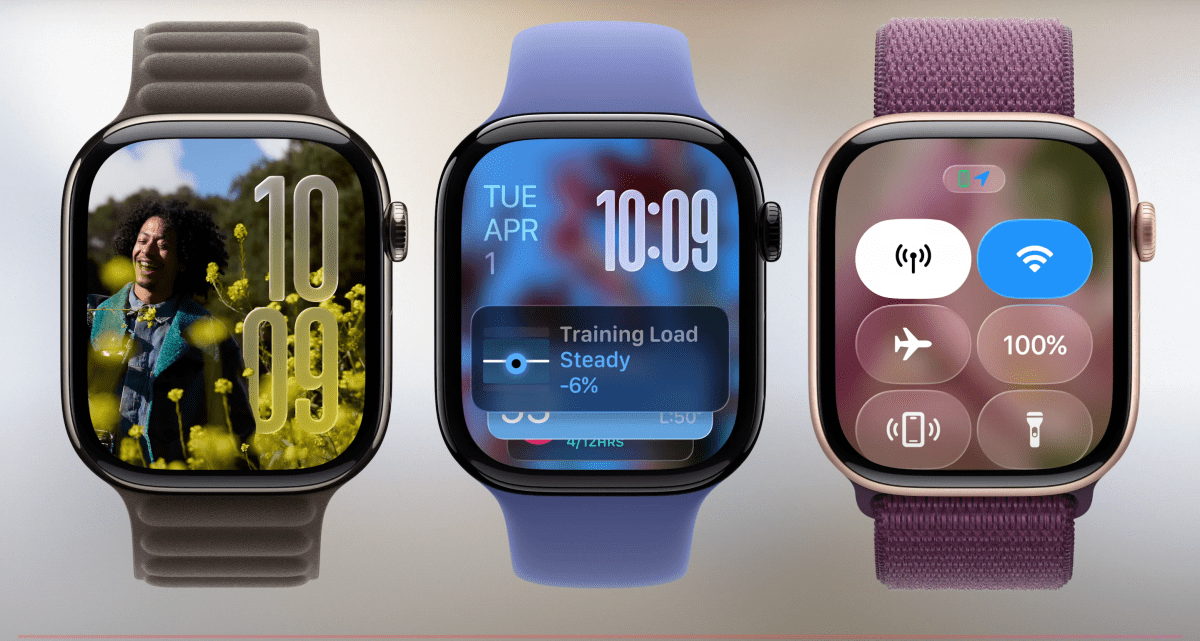
At Apple’s Worldwide Developers Conference (WWDC 25) on Monday, the tech giant unveiled watchOS 26, the upcoming software overhaul for the Apple Watch. watchOS 26 will launch with a redesigned interface based on Apple’s new Liquid Glass operating system, a wrist-flick gesture, a new Apple Intelligence-powered Workout Buddy fitness feature, and more.
The redesigned interface comes as Apple is looking to unify the look and feel of its software across all of its devices.
The new wrist-flick gesture can be used to dismiss notifications that you want to address later. You can also use a flick of your wrist to mute incoming calls and silence timers and alarms.

Meanwhile, the new “Workout Buddy” is built with Apple Intelligence and is designed to motivate you based on your fitness history. It gathers data from your workout and analyzes this data to identify meaningful insights in real time. It provides you with encouragement, and a new text-to-speech model translates that encouragement into a dynamic, generative voice.
The Workout app has also been updated so it’s easier to access what you need. As soon as you start your run, Workout Buddy will kick things off with a pep talk.
Apple is also bringing the Notes app to the Apple Watch, which it says is perfect for when you want to save a quick note to yourself or view an existing note.
With watchOS 26, Apple Watch will also be able to intercept the ambient noise in your environment and automatically adjust the volume of incoming calls and notifications better.
The Apple Watch is also getting the Messages features that are coming to iPhone, such as Live Translation, with watchOS 26.
Technology
Taiwan launches global call on health tech with trade partners
The Go Healthy with Taiwan campaign also aims to attract health and sports proposals. Taiwan kicked off its 2025 “Go Healthy with Taiwan” global call for proposals on 3 June which aims to attract global health and sports tech pitches to partner with Taiwanese manufacturers and a chance at a $30,000 prize. Industry groups representing […]
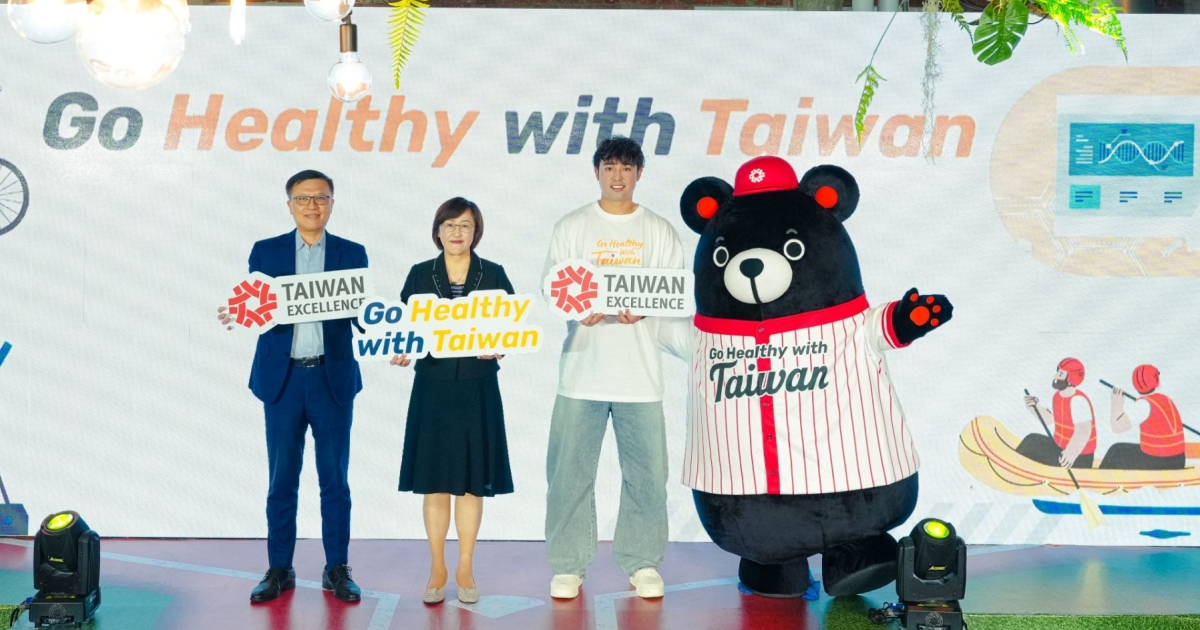
The Go Healthy with Taiwan campaign also aims to attract health and sports proposals.
Taiwan kicked off its 2025 “Go Healthy with Taiwan” global call for proposals on 3 June which aims to attract global health and sports tech pitches to partner with Taiwanese manufacturers and a chance at a $30,000 prize.
Industry groups representing bicycles, sporting goods, and medical equipment are backing the campaign.
The campaign, led by the Bureau of Foreign Trade and organised by the Taiwan Trade Centre (TAITRA), was launched at the Taiwan Museum’s South Gate Park in Taipei.
Up to three winning proposals will each receive a $30,000 prize and the chance to collaborate with Taiwanese enterprises. Finalists will be invited to Taiwan for the competition and related events, with travel and accommodation covered.
The event launch was welcomed with speeches by Joe Chou, Executive Vice President of TAITRA, and Susan Hu, Deputy Director General of the Taiwan International Trade Administration. The event also featured Taiwanese baseball player Lin An-Kuo and highlighted the country’s push to strengthen its position in smart healthcare and wellness technologies.
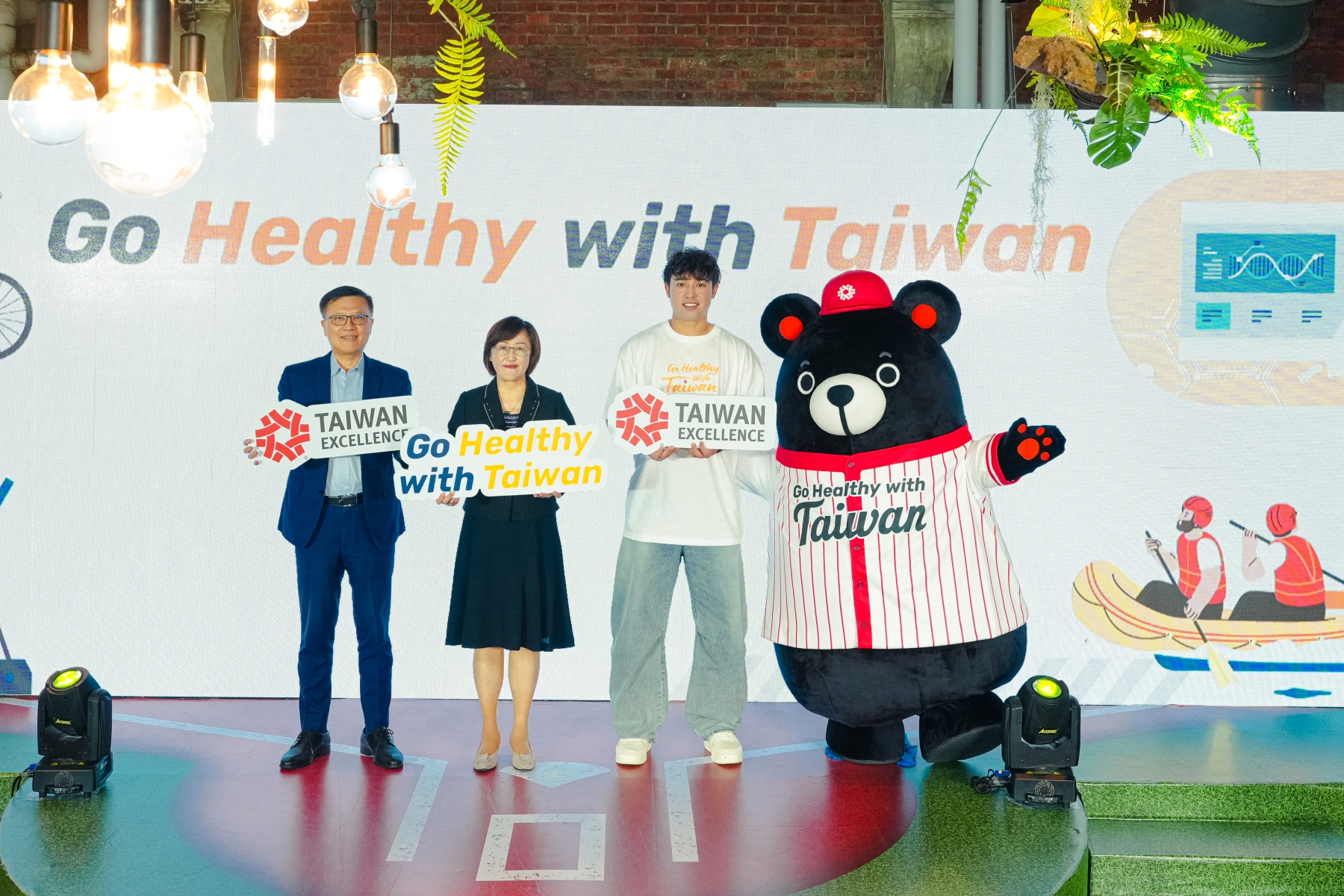
Leading up to the event launch was a media tour, which also spotlighted Taiwanese companies and institutions active in smart healthcare, including Acer Medical, BenQ Medical Technology, Onyx Healthcare, Taipei Veterans General Hospital, and the Taipei Wellness Clinic and Resort.
These organisations demonstrated Taiwan’s capabilities in areas such as artificial intelligence (AI) diagnostics, medical imaging, smart hospital systems, and wellness tourism.
Medical tourism sees increased demand
The global medical tourism sector is projected to reach a compound annual growth rate (CAGR) of 16.08% from 2025 to 2030, according to Grand View Research.
Partly driving this growth, Kai Wang, manager of the Front Office & Leisure Development Department at Hotel Royal Beitou, said the company aims to attract both Taiwanese and international clients to its medical and relaxing health amenities.
The hotel provides indoor and outdoor wellness activities, including fitness classes and rock climbing. It also features Moon Hot Springs with gender-separated hot springs and essential oil hydrotherapy pools.
Sanitas Health Group, through the Taipei Wellness Clinic and Resort, offers comprehensive health services, including MRI, CT scans, and endoscopy, with a 24-hour call centre, said James Chen, account supervisor at Sanitas Health Group.
The hotel serves 26 guests daily, with a 20% return rate for health check-ups, according to Mark Chen, Deputy General Manager, Sanitas Health Group.
“That is because we have a limitation on the MRI and CT’s capacity. So, usually a whole-body health check will take roughly 60 to 70 minutes per person,” M. Chen said. “Roughly 10,000 a year,”
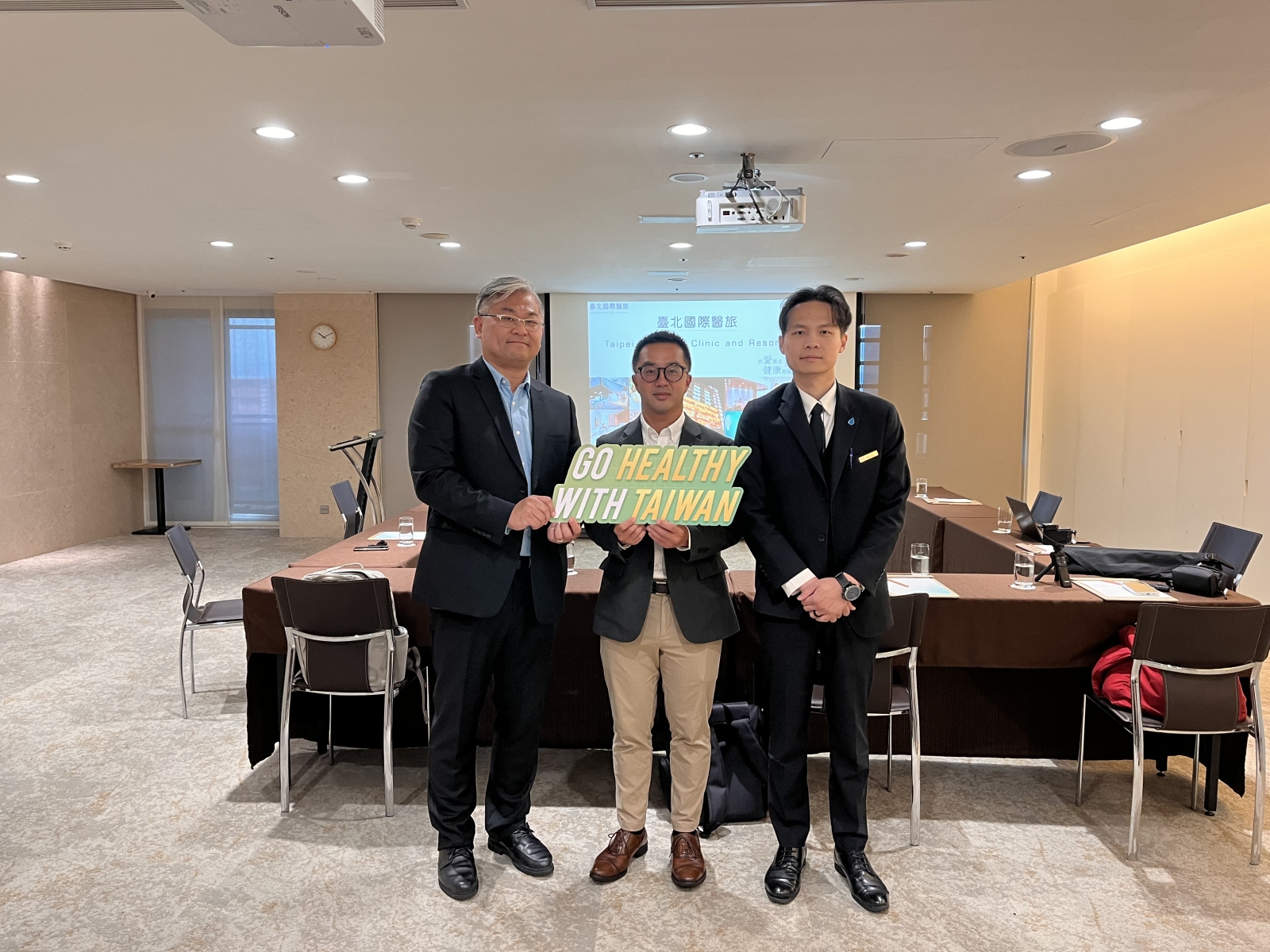
Better tech means better equipment
With Taiwan’s medical device exports hitting over $5bn in 2023, Alex SC Lin, COO of BenQ Dialysis Technology, sees this market expanding rapidly towards China, Southeast Asia (ASEAN Region), the Middle East (KSA and UAE), and Latin America.
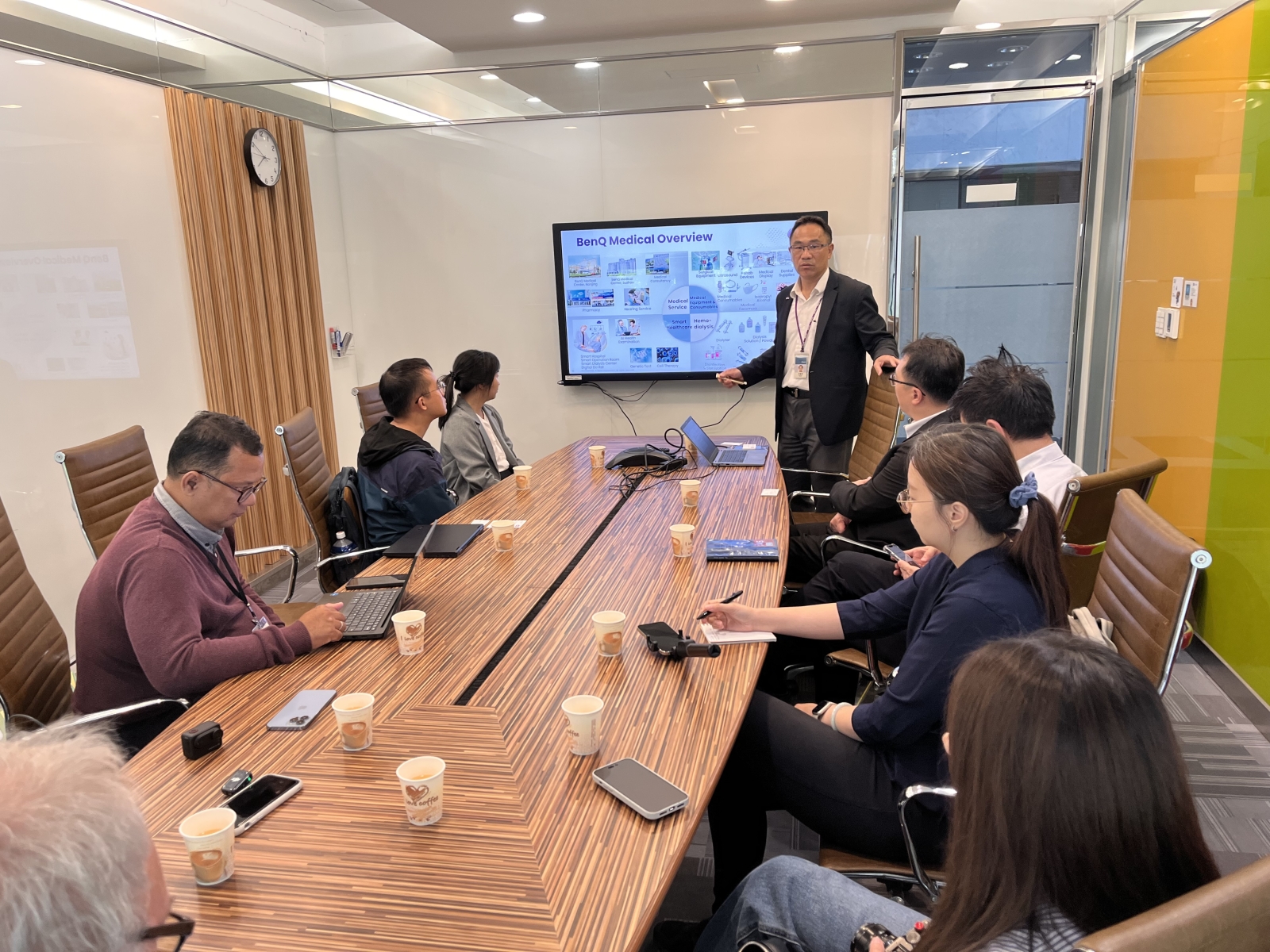
“BenQ is the only company in Taiwan’s medical industry that integrates optomechanics, electronics, medical materials, imaging, and software expertise to leverage its hospital clinical feedback for product innovation, in its ultrasound products and IQOR products,” Lin added.
In retrospect, BenQ started from a joint venture and product distribution in the haemodialysis industry.
For the past 10 years, it has been developing its own products in dialysers, dialysate concentrate and powder, hollow fibre and plastic components, central dialysis fluid delivery system equipment, and disinfection products to offer complete system solutions.
On the other hand, Allen Lien, Chairman and CEO of Acer Medical, Inc., said the company now stands on four pillars, all focused on AI.
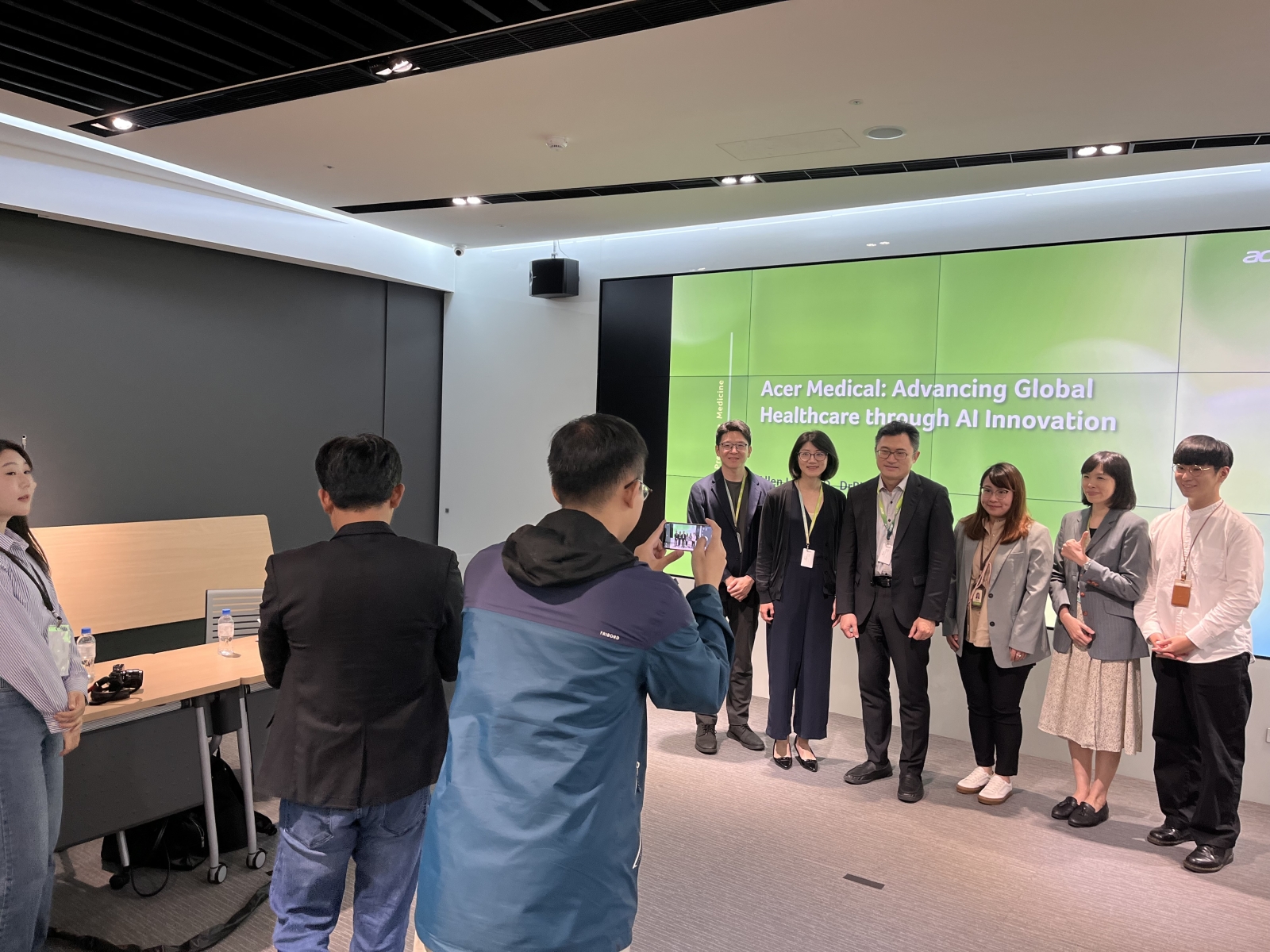
“The first is predictive AI, the second is generative AI, the third is AIoT, and the fourth is using AI for new drug development — including an mRNA vaccine for cancer immunotherapy,” Lien said.
Acer’s technology has already been deployed in 470 healthcare facilities in Taiwan, including 80% of the country’s academic medical centres.
But the impact reaches beyond borders. “We’ve deployed our AI to diplomatic allies like Belize, Laos, and the Marshall Islands,” Lien noted. “Polynesian countries, for example, have a very high prevalence of diabetes but few ophthalmologists,”
Similarly, John Chuang, Founder and CEO of Onyx Healthcare, Inc., sees growth potential in Southeast Asia, where health ministries are supporting smart hospital initiatives.
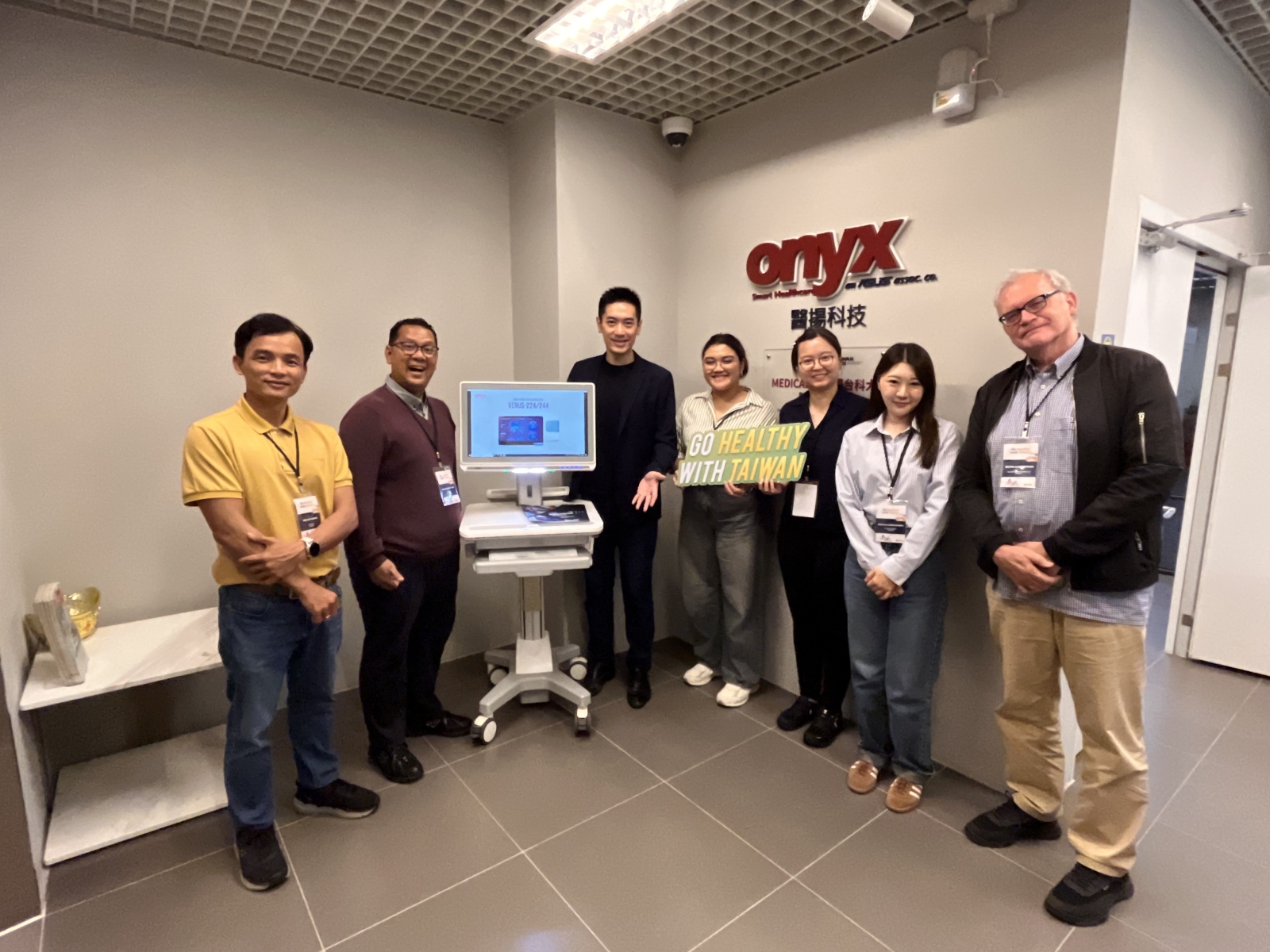
Whilst hardware is its main offering, the company frequently collaborates with software vendors and system integrators to ensure compatibility and ease of deployment.
“Our design process starts with the medical use case,” said Chuang. “We’re not adapting consumer PCs for hospitals — we build for medical applications from the beginning,”
Smart equipment needs smart hospitals
Taipei Veterans General Hospital (TVGH), one of Taiwan’s largest veterans’ hospitals in the market, is advancing its smart hospital initiatives by integrating AI, expanding international collaborations, and focusing on both hospital-based and home-based care, according to Wui-Chiang Lee, Vice Superintendent at TVGH.
For example, their sleep disorder programme tackles undiagnosed sleep apnoea through a combined AI model and wearable SPO₂ sensors. “We are able to identify only five questions to differentiate insomnia and sleep apnoea,” Albert Yang, deputy director of the Medical AI Development Centre at TVGH, said. These include BMI, age, and symptoms like coughing or snoring.
“With the new AI assistant, it took about just one minute – it actually saves 6.5 minutes per case,” added Shu-Chen Kuo, Nursing Supervisor at TVGH, describing how AI is reducing staff workload.
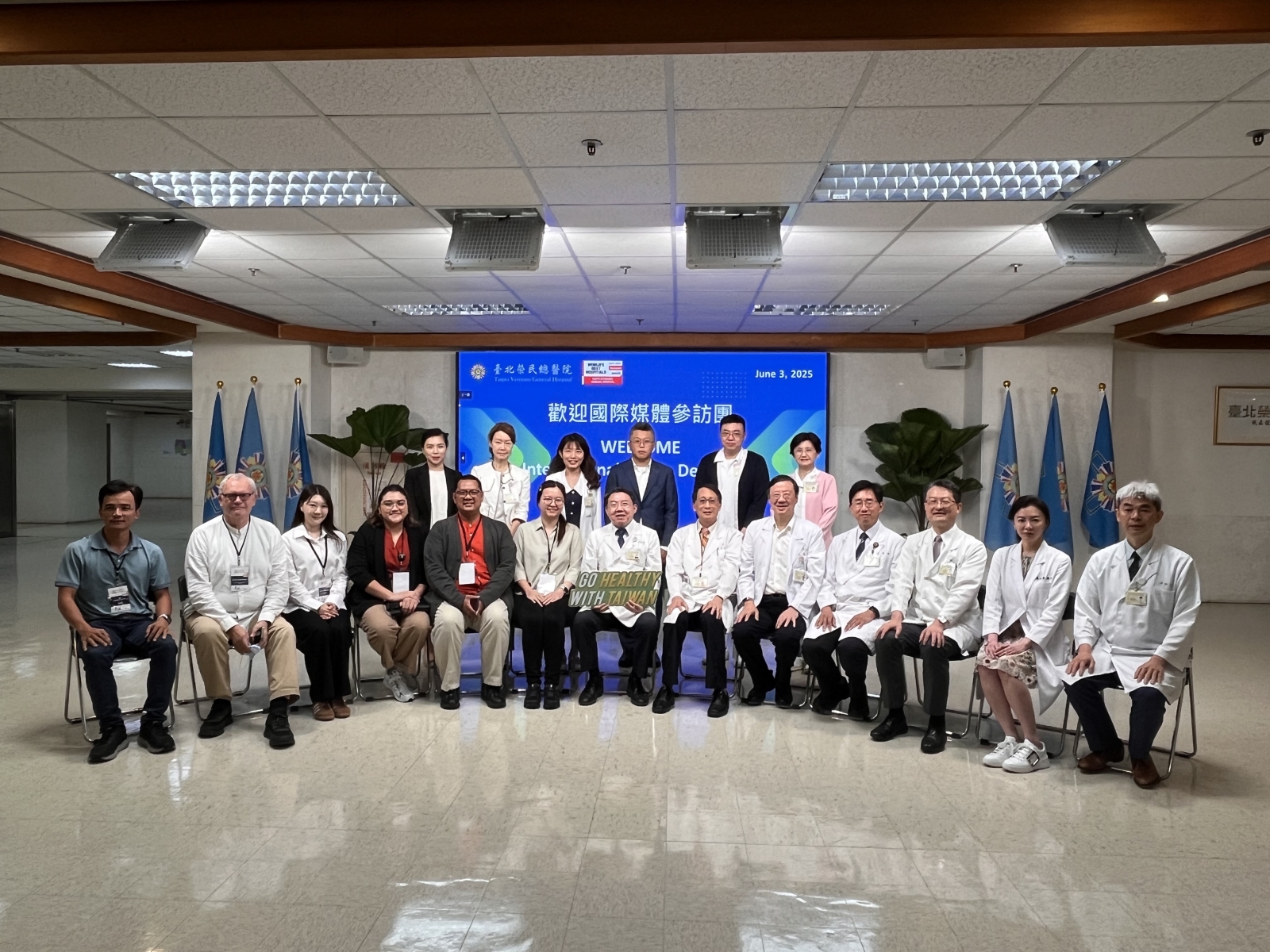
The campaign is timed ahead of Medical Taiwan, an international trade exhibition which took place from 5 to 7 June at the Taipei Nangang Exhibition Centre.
-

 Professional Sports3 weeks ago
Professional Sports3 weeks agoJon Jones answers UFC retirement speculation as fans accuse champion of 'holding the belt …
-

 Youtube3 weeks ago
Youtube3 weeks agoXavier Legette taught Marty Smith his signature celly
-

 Motorsports3 weeks ago
Motorsports3 weeks agoWhy IHOP Rode With Dale Earnhardt Jr. In Amazon NASCAR Debut
-

 NIL2 weeks ago
NIL2 weeks ago2025 NCAA Softball Tournament Bracket: Women’s College World Series bracket, schedule set
-

 High School Sports3 weeks ago
High School Sports3 weeks agoToday in the MHSAA
-

 Health4 days ago
Health4 days agoOregon track star wages legal battle against trans athlete policy after medal ceremony protest
-

 College Sports1 week ago
College Sports1 week agoIU basketball recruiting
-

 Professional Sports5 days ago
Professional Sports5 days ago'I asked Anderson privately'… UFC legend retells secret sparring session between Jon Jones …
-

 Youtube3 weeks ago
Youtube3 weeks agoAnt greets A-Rod & Barry Bonds before Game 3
-

 Rec Sports2 weeks ago
Rec Sports2 weeks agoJ.W. Craft: Investing in Community Through Sports

















 Perk says Ant DID NOT struggle in Game 4 | NBA Today
Perk says Ant DID NOT struggle in Game 4 | NBA Today






















